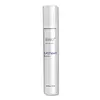What's inside
What's inside
 Key Ingredients
Key Ingredients

 Benefits
Benefits

 Concerns
Concerns

No concerns
 Ingredients Side-by-side
Ingredients Side-by-side

Water
Skin ConditioningDimethicone
EmollientDipropylene Glycol
HumectantButylene Glycol
HumectantGlycerin
HumectantBellis Perennis Flower Extract
Skin ConditioningDimethicone/PEG-10/15 Crosspolymer
PEG/PPG-18/18 Dimethicone
EmulsifyingLupinus Albus Seed Oil
Skin ConditioningTriticum Vulgare Germ Oil
EmollientPEG-35 Castor Oil
EmulsifyingHieracium Pilosella Extract
MaskingScutellaria Baicalensis Root Extract
AstringentCordyceps Militaris Mycelium Extract
Skin ConditioningGlycyrrhiza Uralensis Root Extract
Skin ConditioningAngelica Polymorpha Sinensis Root Extract
Skin ConditioningBuddleja Davidii Meristem Cell Culture
Skin ConditioningLactobacillus
Skin ConditioningSodium Chloride
MaskingDimethicone Crosspolymer
Emulsion StabilisingLactobacillus Ferment
Skin ConditioningPhospholipids
Skin ConditioningSodium Citrate
BufferingSodium Tocopheryl Phosphate
AntioxidantHydrolyzed Sericin
Skin ConditioningCera Alba
EmollientDimethicone/Vinyl Dimethicone Crosspolymer
Skin ConditioningSodium Acetylated Hyaluronate
HumectantPanthenyl Triacetate
Acetyl Tyrosine
Skin ConditioningEthyl Linoleate
Emollient1,2-Hexanediol
Skin ConditioningPentylene Glycol
Skin ConditioningProline
Skin ConditioningCitric Acid
BufferingHydrolyzed Vegetable Protein
Skin ConditioningOleyl Alcohol
EmollientDipeptide Diaminobutyroyl Benzylamide Diacetate
Skin ConditioningSilica
AbrasiveSilica Silylate
EmollientBeta-Glucan
Skin ConditioningTocopherol
AntioxidantDisodium Acetyl Glucosamine Phosphate
Skin ConditioningAdenosine Triphosphate
Skin ConditioningCaprylyl Glycol
EmollientHexylene Glycol
EmulsifyingPEG-12 Glyceryl Laurate
EmulsifyingAcetyl Tetrapeptide-5
HumectantXanthan Gum
EmulsifyingDisodium EDTA
Pvp
Emulsion StabilisingSodium Benzoate
MaskingSodium Dehydroacetate
PreservativePhenoxyethanol
PreservativePotassium Sorbate
PreservativeWater, Dimethicone, Dipropylene Glycol, Butylene Glycol, Glycerin, Bellis Perennis Flower Extract, Dimethicone/PEG-10/15 Crosspolymer, PEG/PPG-18/18 Dimethicone, Lupinus Albus Seed Oil, Triticum Vulgare Germ Oil, PEG-35 Castor Oil, Hieracium Pilosella Extract, Scutellaria Baicalensis Root Extract, Cordyceps Militaris Mycelium Extract, Glycyrrhiza Uralensis Root Extract, Angelica Polymorpha Sinensis Root Extract, Buddleja Davidii Meristem Cell Culture, Lactobacillus, Sodium Chloride, Dimethicone Crosspolymer, Lactobacillus Ferment, Phospholipids, Sodium Citrate, Sodium Tocopheryl Phosphate, Hydrolyzed Sericin, Cera Alba, Dimethicone/Vinyl Dimethicone Crosspolymer, Sodium Acetylated Hyaluronate, Panthenyl Triacetate, Acetyl Tyrosine, Ethyl Linoleate, 1,2-Hexanediol, Pentylene Glycol, Proline, Citric Acid, Hydrolyzed Vegetable Protein, Oleyl Alcohol, Dipeptide Diaminobutyroyl Benzylamide Diacetate, Silica, Silica Silylate, Beta-Glucan, Tocopherol, Disodium Acetyl Glucosamine Phosphate, Adenosine Triphosphate, Caprylyl Glycol, Hexylene Glycol, PEG-12 Glyceryl Laurate, Acetyl Tetrapeptide-5, Xanthan Gum, Disodium EDTA, Pvp, Sodium Benzoate, Sodium Dehydroacetate, Phenoxyethanol, Potassium Sorbate
 Reviews
Reviews

Ingredients Explained
These ingredients are found in both products.
Ingredients higher up in an ingredient list are typically present in a larger amount.
Dipropylene Glycol is a synthetically created humectant, stabilizer, and solvent.
This ingredient helps:
Dipropylene glycol is technically an alcohol, but it belongs to the glycol family (often considered part of the ‘good’ alcohols). This means it is hydrating and gentle on skin unlike drying solvent alcohols like denatured alcohol.
As a masking agent, Dipropylene Glycol can be used to cover the smell of other ingredients. However, it does not have a scent.
Studies show Dipropylene Glycol is considered safe to use in skincare.
Learn more about Dipropylene GlycolPhenoxyethanol is a preservative that has germicide, antimicrobial, and aromatic properties. Studies show that phenoxyethanol can prevent microbial growth. By itself, it has a scent that is similar to that of a rose.
It's often used in formulations along with Caprylyl Glycol to preserve the shelf life of products.
Water. It's the most common cosmetic ingredient of all. You'll usually see it at the top of ingredient lists, meaning that it makes up the largest part of the product.
So why is it so popular? Water most often acts as a solvent - this means that it helps dissolve other ingredients into the formulation.
You'll also recognize water as that liquid we all need to stay alive. If you see this, drink a glass of water. Stay hydrated!
Learn more about Water